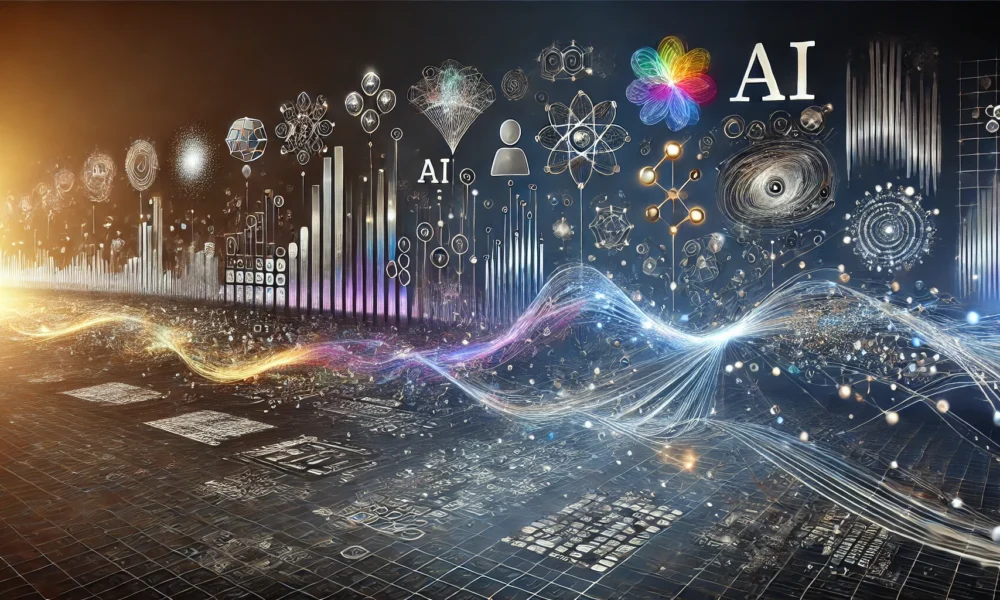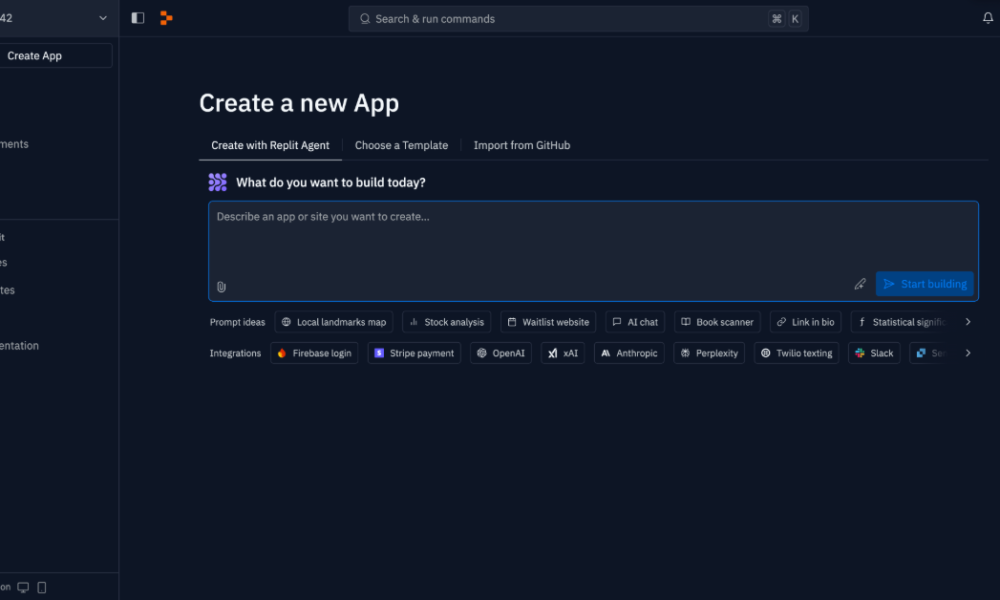<div id="mvp-content-main">
<h2><strong>Revolutionizing AI: An Introduction to Dream 7B</strong></h2>
<p><a target="_blank" href="https://www.unite.ai/machine-learning-vs-artificial-intelligence-key-differences/">Artificial Intelligence (AI)</a> has advanced significantly, evolving from basic text and image generation to sophisticated systems capable of reasoning, planning, and decision-making. With AI's evolution, there's a rising need for models that tackle more complex tasks. Traditional models, like <a target="_blank" href="https://openai.com/index/gpt-4/">GPT-4</a> and <a target="_blank" href="https://www.llama.com/">LLaMA</a>, have marked important milestones but often struggle with reasoning and long-term planning challenges. Enter <a target="_blank" href="https://hkunlp.github.io/blog/2025/dream/">Dream 7B</a>, which introduces a diffusion-based reasoning model designed to enhance quality, speed, and flexibility in AI-generated content.</p>
<h3><strong>Understanding Diffusion-Based Reasoning Models</strong></h3>
<p>Diffusion-based reasoning models, such as Dream 7B, signal a major shift from conventional AI language generation techniques. For years, autoregressive models have dominated the landscape, constructing text one token at a time by predicting the next word based solely on preceding ones. While effective, this method has limitations, particularly in tasks demanding long-term reasoning and complex planning.</p>
<p>In contrast, <a target="_blank" href="https://www.unite.ai/diffusion-models-in-ai-everything-you-need-to-know/">diffusion models</a> reshape the approach to language generation. Instead of building a sequence word by word, they commence with a noisy sequence and systematically refine it through multiple steps. Starting from nearly random content, the model iteratively denoises, adjusting values until the output is both meaningful and coherent. This method enables the simultaneous refinement of the entire sequence rather than a serialized process.</p>
<p>By processing sequences in parallel, Dream 7B captures context from both the beginning and end, resulting in outputs that are more accurate and contextually aware. This sets diffusion models apart from autoregressive ones, bound to a left-to-right generation paradigm.</p>
<p>The benefit of this technique lies in its improved coherence, especially over longer sequences. Traditional models can lose track of earlier context when generating text step-by-step, compromising consistency. However, the parallel refinement of diffusion models allows for stronger coherence and context retention, making them ideal for tackling complex and abstract tasks.</p>
<p>Moreover, diffusion-based models excel at reasoning and planning. Their structure allows them to handle tasks requiring multi-step reasoning and problem-solving within various constraints. Consequently, Dream 7B shines in advanced reasoning challenges where autoregressive models may falter.</p>
<h3><strong>Diving into Dream 7B’s Architecture</strong></h3>
<p>Dream 7B boasts a <a target="_blank" href="https://apidog.com/blog/dream-7b/">7-billion-parameter architecture</a> designed for high performance and precise reasoning. While large, its diffusion-based framework enhances efficiency, enabling dynamic and parallelized text processing.</p>
<p>The architecture incorporates several key features, including bidirectional context modeling, parallel sequence refinement, and context-adaptive token-level noise rescheduling. These elements synergize to empower the model's capabilities in comprehension, generation, and text refinement, leading to superior performance in complex reasoning tasks.</p>
<h3><strong>Bidirectional Context Modeling</strong></h3>
<p>Bidirectional context modeling marks a pivotal departure from traditional autoregressive techniques, where models only focus on previous words to predict the next. Dream 7B, however, leverages a bidirectional strategy, enabling it to assess context from both past and future, enhancing its grasp of relationships between words and phrases. This approach yields outputs that are richer in context and coherence.</p>
<h3><strong>Parallel Sequence Refinement</strong></h3>
<p>Beyond bidirectionality, Dream 7B employs parallel sequence refinement. Whereas traditional models generate tokens one at a time, this model refines the complete sequence in tandem. This strategy maximizes context utilization from all sequence parts, allowing for accurate and coherent outputs, especially when deep reasoning is essential.</p>
<h3><strong>Innovations in Autoregressive Weight Initialization and Training</strong></h3>
<p>Dream 7B employs autoregressive weight initialization, leveraging pre-trained weights from models like <a target="_blank" href="https://huggingface.co/Qwen/Qwen2.5-7B">Qwen2.5 7B</a> to establish a robust foundation for language processing. This technique accelerates the model's adaptation to the diffusion framework. Furthermore, its context-adaptive token-level noise rescheduling refines the learning process by tailoring noise levels according to token context, thereby improving accuracy and relevance.</p>
<h3><strong>How Dream 7B Outperforms Traditional Models</strong></h3>
<p>Dream 7B distinguishes itself from conventional autoregressive models by offering notable enhancements in coherence, reasoning, and text generation flexibility, enabling superior performance in challenging tasks.</p>
<h3><strong>Enhanced Coherence and Reasoning</strong></h3>
<p>A major differentiation of Dream 7B is its capacity to uphold coherence over lengthy sequences. Traditional autoregressive models often lose track of earlier context, resulting in inconsistencies. The parallel processing approach of Dream 7B, however, fosters a consistent understanding throughout the text, yielding coherent and contextually rich outputs, particularly in complex tasks.</p>
<h3><strong>Effective Planning and Multi-Step Reasoning</strong></h3>
<p>Dream 7B also excels in scenarios requiring planning and multi-step reasoning. Traditional models, generating text step by step, struggle to maintain the necessary context for problems with multiple constraints. In contrast, Dream 7B’s simultaneous refinement considers both historical and future contexts, making it adept at handling tasks with various objectives, such as mathematical reasoning and logical puzzles. This results in more accurate outputs compared to models like LLaMA3 8B and Qwen2.5 7B.</p>
<h3><strong>Flexible Text Generation</strong></h3>
<p>Dream 7B offers unparalleled flexibility in text generation, unlike traditional autoregressive models that follow a rigid sequence. Users can adjust the number of diffusion steps, balancing speed and output quality. With fewer steps, users achieve rapid but less refined results; with more steps, they acquire higher-quality outputs at the expense of computational resources. This level of flexibility empowers users to tailor the model's performance to their specific needs, whether for quicker results or more thorough content.</p>
<h2><strong>Potential Applications Across Industries</strong></h2>
<h3><strong>Advanced Text Completion and Infilling</strong></h3>
<p>Dream 7B’s capability to generate text in any order unlocks numerous possibilities, including dynamic content creation. It is adept at completing paragraphs or sentences based on partial inputs, making it perfect for drafting articles, blogs, and creative writing. Additionally, its prowess in document editing enhances infilling of missing sections in both technical and creative texts while preserving coherence.</p>
<h3><strong>Controlled Text Generation</strong></h3>
<p>With its flexible text generation ability, Dream 7B also excels in SEO-optimized content creation, generating structured texts that align with strategic keywords to elevate search engine rankings. Additionally, it adapts outputs to meet specific styles, tones, or formats, making it invaluable for professional reports, marketing materials, or creative projects.</p>
<h3><strong>Quality-Speed Adjustability</strong></h3>
<p>Dream 7B's diffusion-based architecture offers a unique blend of rapid content delivery and detailed text generation. For fast-paced initiatives like marketing campaigns or social media updates, it can swiftly produce outputs, whereas its capacity for quality and speed adjustments facilitates polished content suitable for sectors like legal documentation or academic research.</p>
<h2><strong>The Bottom Line</strong></h2>
<p>In summary, Dream 7B represents a significant leap in AI capabilities, enhancing efficiency and flexibility for intricate tasks that traditional models find challenging. By leveraging a diffusion-based reasoning model rather than conventional autoregressive approaches, Dream 7B elevates coherence, reasoning, and text generation versatility. This empowers it to excel across diverse applications, from content creation to problem-solving and planning, maintaining consistency and adeptness in tackling complex challenges.</p>
</div>This rewritten article maintains the essence of the original content while improving clarity and flow. The headlines are structured for SEO, engaging, and informative, following HTML formatting best practices.
Here are five FAQs regarding "Dream 7B: How Diffusion-Based Reasoning Models Are Reshaping AI":
1. What are diffusion-based reasoning models?
Answer: Diffusion-based reasoning models are advanced AI frameworks that leverage diffusion processes to enhance reasoning and decision-making capabilities. These models utilize probabilistic approaches to propagate information through networks, allowing them to understand complex patterns and relationships in data more effectively.
2. How do diffusion-based reasoning models differ from traditional AI models?
Answer: Unlike traditional AI models that often rely on deterministic algorithms, diffusion-based models incorporate randomness and probability. This allows them to better simulate complex systems and handle uncertainty, leading to more robust reasoning and improved performance in tasks like image recognition and natural language processing.
3. What advantages do diffusion-based models offer in AI applications?
Answer: Diffusion-based models offer several advantages, including enhanced accuracy in predictions, improved adaptability to new data, and robustness against adversarial attacks. Their ability to model uncertainty makes them particularly effective in dynamic environments where traditional models may struggle.
4. In what industries are these models being utilized?
Answer: Diffusion-based reasoning models are being applied across various industries, including finance for risk assessment, healthcare for predictive analytics, autonomous vehicles for navigation systems, and entertainment for personalized recommendations. Their versatility makes them suitable for any domain requiring complex decision-making.
5. What is the future outlook for diffusion-based reasoning models in AI?
Answer: The future of diffusion-based reasoning models looks promising, with ongoing research focused on improving their efficiency and scalability. As AI continues to evolve, these models are expected to play a pivotal role in advancing machine learning capabilities, driving innovations in automation, data analysis, and beyond.










